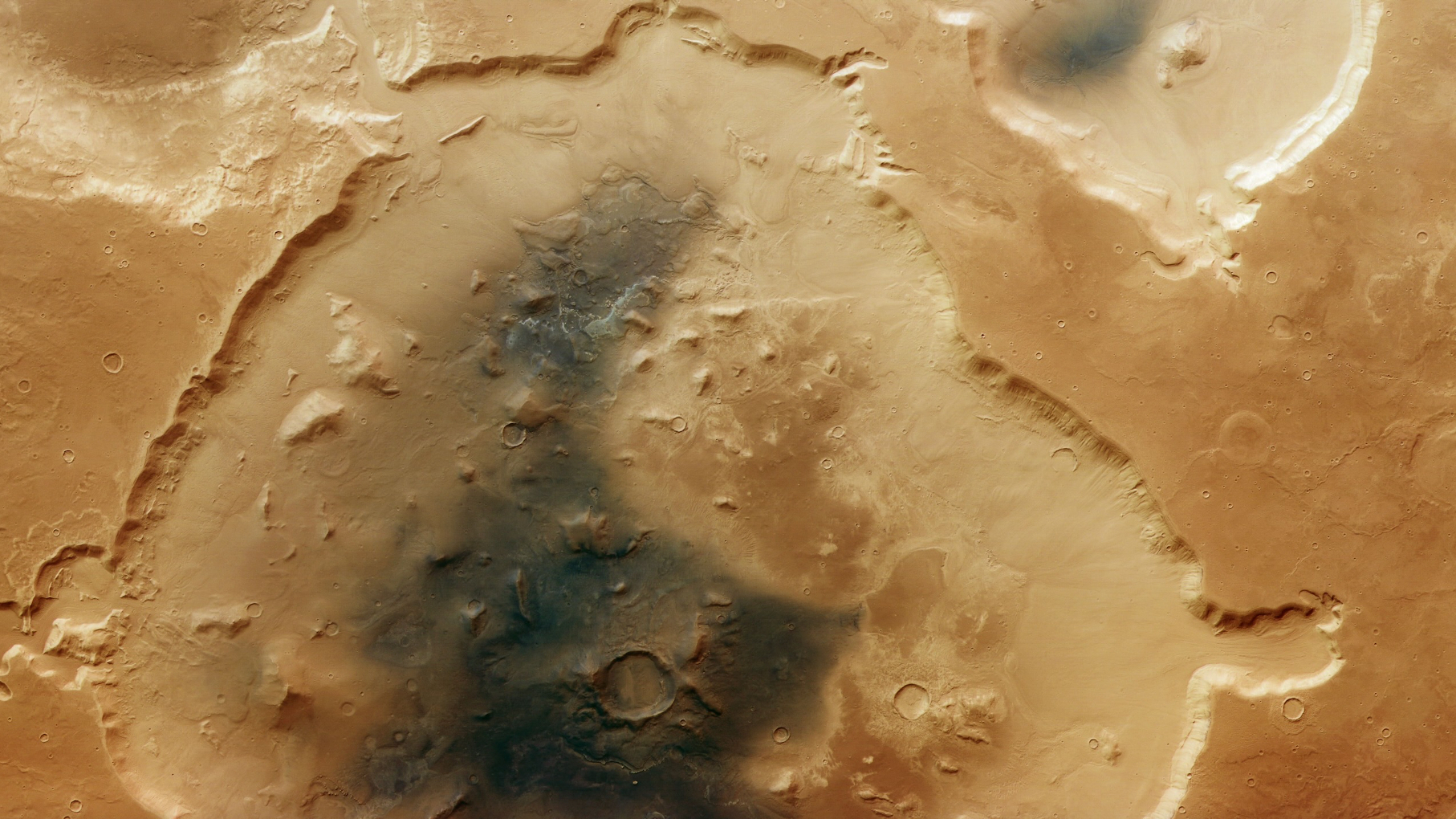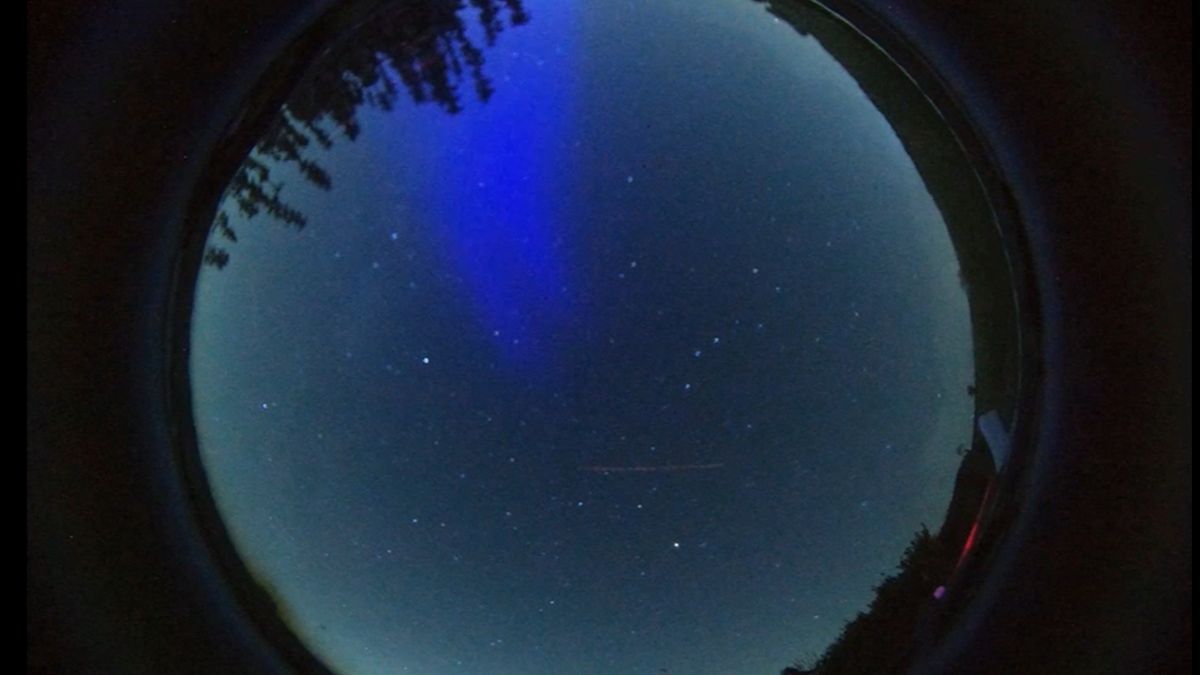A European Mars probe captured a stunning view of a Martian crater that's rich in many of the features that help scientists reconstruct the planet's dynamic history over billions of years.
The image, taken in October 2024 using the High Resolution Stereo Camera (HRSC) on the European Space Agency's (ESA) Mars Express orbiter, shows a crumbling crater called Deuteronilus Cavus. It is "soaked in layers of Martian history," having been exposed to volcanic lava flows, erosion from liquid water, repeated freeze-thaw cycles that expanded its edges, and layers of wind-blown volcanic dust settling over time, according to a statement from the space agency.
Located in a transitional zone between the planet's rugged southern highlands and smoother northern lowlands, Deuteronilus Cavus is believed to originally have formed following an impact roughly 4.1 to 3.7 billion years ago, when Mars and other planets were being bombarded by huge numbers of asteroids and comets. Over time, the nearly circular 75-mile-wide (120 kilometers) depression has been eroded by water and ice, enlarging it to nearly twice its initial size.
ESA shared a fun "recipe" outlining the series of events that shaped the crater, offering valuable insights into the planet's climatic and geological evolution. For example, the presence of clay minerals indicates past interactions between volcanic materials and water, hinting at the possibility of ancient habitable environments, according to the statement.
This is further supported by channels cut through the crater's rim, likely formed by surface water flow or the collapse of weakened ground above draining subsurface water. Meanwhile, grooves in the crater rim suggest that ice once formed when Mars' axis tilted more sharply away from the sun than it does now.
"The linear grooves indicate where boulders frozen into the base of a glacier were dragged along, gouging out the troughs visible today," ESA officials said in the statement. "Around the base of the crater's inner walls, we can see the smooth, tongue-shaped ends of rock-covered glaciers. These 'debris aprons' formed when ice mixed together with rocky debris along the crater walls during a period of glaciation, and slowly crept downslope."
The crater's interior also exhibits a mix of rock knobs, mesas, channels and plains, believed to be remnants of a collapsed central peak. Dark volcanic ash covers much of the crater floor, while surrounding wrinkle ridges mark ancient lava flows.
"This feature-rich crater has all the ingredients for exploring Mars' varied geological processes, giving us a tantalizing taste of its complex history," ESA officials said in the statement.
.png)
 German (DE)
German (DE)  English (US)
English (US)  Spanish (ES)
Spanish (ES)  French (FR)
French (FR)  Hindi (IN)
Hindi (IN)  Italian (IT)
Italian (IT)  Russian (RU)
Russian (RU) 







Comments